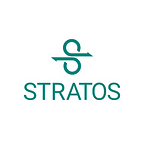Tropos Incentive Testnet Rewards Distribution Explained
Two-sentence Summary:
The core value provided by Stratos is coming from the resource network, thus the SDS node providers will gain much more reward than the Blockchain validator providers. No need to abuse our faucet to compete to be an active validator. More detailed explanation to follow.
Tropos Incentive Testnet
First of all, thanks to everyone that participated in our incentive testnet. In ONLY five days after the launch, we already have more than 800 Stratos blockchain full nodes.
Meanwhile, there is high pressure on the faucet service to get testing STOS tokens. We also noticed that there is a misunderstanding on the reward distribution on the Tropos network which causes the high demand for the testing token.
We will restate the reward plan and give an example of the calculation in this article.
Incentive Reward Plan
Here is a detailed explanation of the reward calculation on the Tropos incentive testnet. Please note that the calculation is not exactly the same as what we described in our economic whitepaper for our mainnet. Here are some main differences you need to be aware of.
- STOS does not have real value in the testing network.
- Since STOS does not have real value, we will not calculate the deposit reward by the deposit amount.
- Mining reward will be distributed in the form of TROS token rather than STOS.
- Traffic reward will be earned in testnet in the form of STOS, it does not have actual value in testnet, thus will not be part of the incentive reward.
Now we can look at how we will distribute the mining reward to the network participants.
Blockchain: 20% of the total reward. This part is actually the deposit reward. All participating nodes of Tropos need to deposit testing STOS tokens. Since the testing STOS token does not have real value, we cannot calculate the deposit reward based on the deposit amount, we will evenly distribute the deposit reward to all active nodes, including the active validators and all resource nodes.
Meta node: 2% of total reward. This small amount is mainly for testing purposes to ensure our calculation function works as designed.
Resource node: 78% of total reward. These are rewards that are distributed to SDS nodes that have traffic in the rewarding epoch. And as described in the economic whitepaper, at each epoch only the nodes in the 80% of the top traffic can earn rewards.
Example of Reward Calculation
Assumptions
Assuming we have 100 Stratos chain active validators, 100 inactive validators, and 3100 SDS nodes. Every epoch we will distribute 80 TROS as the mining reward.
To simplify the calculation, for presentation purposes we assume that each SDS node has the same traffic.
Blockchain Reward
Total mining reward for blockchain = 80 X 20% = 16 TROS
Mining Reward for each node = 16 / (100+3100) = 0.005 TROS (Inactive validator do not earn reward)
Resource Node Reward
Total mining reward for resource node =80 X 78% = 62.4 TROS
Total resource node can earn mining reward = 3100 X 80% = 2480 (assumed each node provide the same traffic volume)
Mining reward for each resource node = 62.4 / 2480 = 0.025 TROS
Result
If you run a validator node only and you are among the 100 active validators, your reward of each epoch is 0.005 TROS.
If you run a SDS resource node, your reward of each epoch will be 0.005+0.025 = 0.03 TROS.
Conclusion
To summarize, the core value provided by Stratos is coming from the resource network. That’s why our reward distribution schema also reflects the importance of different types of nodes in the whole network. SDS node provider will gain much more than the Blockchain validator provider.
The testing token is used for every participant to have their node running, the holding amount does not count to the reward. For sure it can ensure the node in the first 100 active validators, but compared to the SDS node, the reward is just a very small portion.
About Stratos
Stratos is the next generation of decentralized Data Mesh that provides a scalable, reliable, self-balanced storage, database, and computation network. Stratos is born for scaling blockchain process capacity while retaining the decentralized benefits of a distributed protocol including trustlessness, traceability, verifiability, privacy, and other competitive strengths.
Stratos is best positioned to support data storage and adoption for developers and users in this ever-expanding digital economy. Stratos strives to make decentralized data adoption easier for the blockchain industry and Web 3.0.
Stay tuned for more info and follow us at:
Twitter | Telegram Group |Telegram Announcement Channel| Medium | Discord | YouTube| LinkedIn | WeChat: Stratos | Reddit
